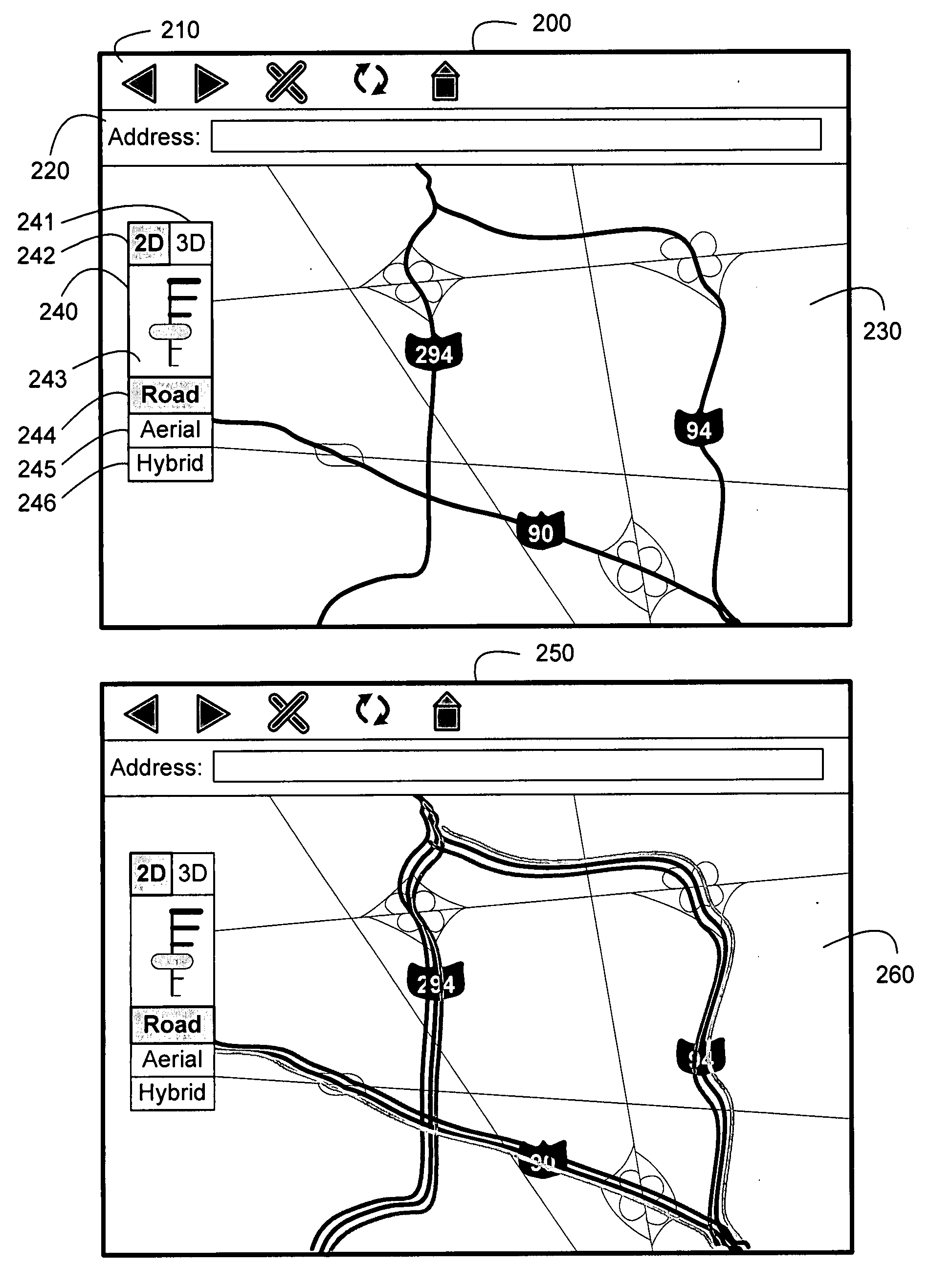Adding custom content to mapping applications
a mapping application and custom content technology, applied in the field of mapping application custom content, can solve the problems of limiting the amount and type of information typically provided by digital map publishers, time-consuming and costly, and limiting the ability of digital map publishers to provide such information, so as to increase the level of detail available to consumers and increase storage or bandwidth
- Summary
- Abstract
- Description
- Claims
- Application Information
AI Technical Summary
Benefits of technology
Problems solved by technology
Method used
Image
Examples
Embodiment Construction
[0019]The following description relates to the independent provision of details on digital maps provided by a digital map publisher. An application, such as a specific digital map reader, or a more general network or image browser, can be used to display sections, or “tiles,” of a digital map. Further details can be provided by overlaying additional tiles with those details over the digital map tiles. Such further details can be generated, maintained, stored and provided independently of the map tiles. Interface mechanisms can facilitate the overlaying of independently provided details by selecting appropriate tiles that comprise the independently provided details and that correspond to the map tiles being shown. Such interface mechanisms can reference declarative specifications of each detail layer to identify the appropriate tiles and to instruct the application to display such map and detail tiles appropriately. Alternatively, greater ease of use can be provided by soliciting spe...
PUM
 Login to View More
Login to View More Abstract
Description
Claims
Application Information
 Login to View More
Login to View More - R&D
- Intellectual Property
- Life Sciences
- Materials
- Tech Scout
- Unparalleled Data Quality
- Higher Quality Content
- 60% Fewer Hallucinations
Browse by: Latest US Patents, China's latest patents, Technical Efficacy Thesaurus, Application Domain, Technology Topic, Popular Technical Reports.
© 2025 PatSnap. All rights reserved.Legal|Privacy policy|Modern Slavery Act Transparency Statement|Sitemap|About US| Contact US: help@patsnap.com



